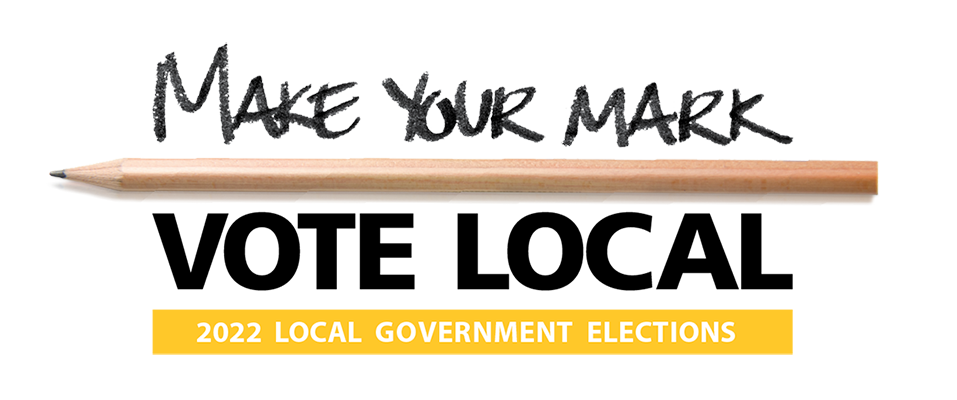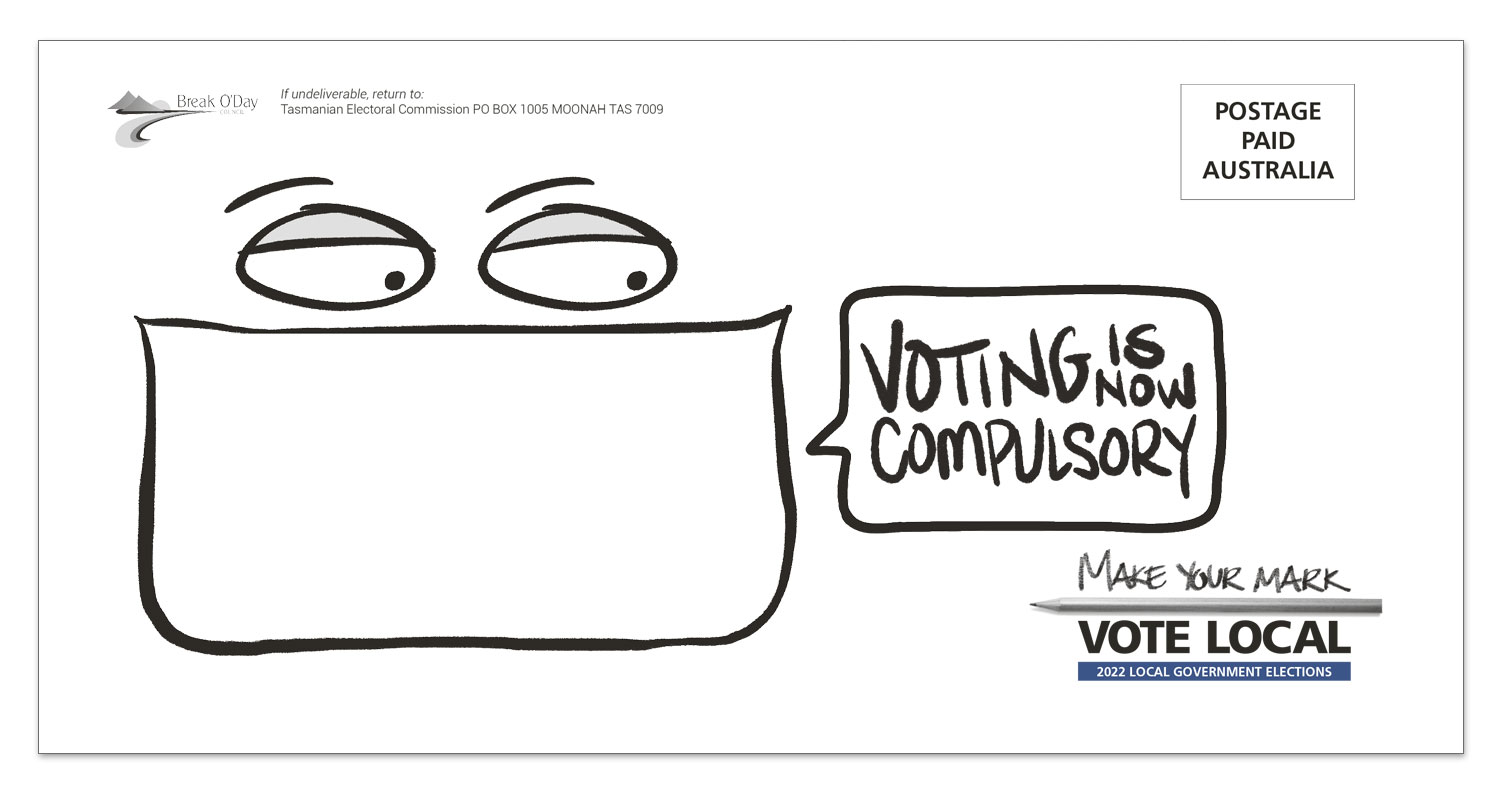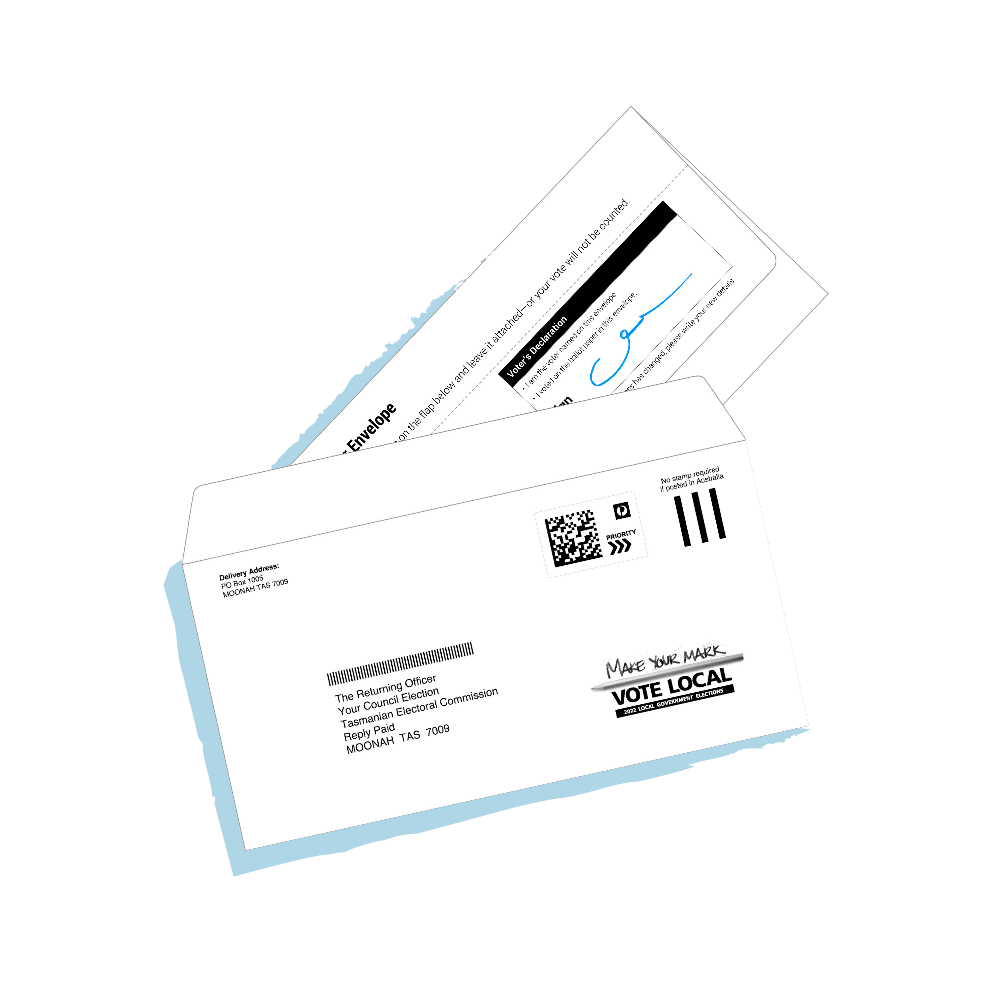Local government elections 2022


Recent amendments to the Local Government Act 1993 mean that voting in local government elections is now compulsory for all electors on the State roll. Learn more (media release from Minister, 2 June 2022)
Unlike attendance voting on polling day for Parliamentary elections, local government elections in Tasmania are conducted by postal ballot.
Polling closed at 2pm Tuesday 25 October 2022.

Australia Post delivered all packs between Monday 3 and Friday 7 October. If you haven't received your ballot pack follow this procedure
If you haven't received or require a replacement ballot pack, it's too late for us to post one. But there is still an option available:
If you are unable:
please don't contact the TEC now. You will be sent a letter after the election, you can advise of us your valid excuse then.
Update, Wednesday 14 December 2022 - Failure to vote notices have been posted to electors who appeared to have failed to vote. On this occassion, the Commissioner has resolved that no penalties will be issued for the 2022 local government elections.
TEC media release, 14 December 2022
Learn more

To ensure your vote is received by the returning officer by 2pm Tuesday 25 October, drop your completed declaration envelope into the ballot box at your local council.
With the support of local councils, the TEC will be providing impartial assisted voting in each municipal area across Tasmania.
How ballot envelopes work to keep your vote private and secure.
All councillor elections are conducted using a slightly modified version of the Hare-Clark electoral system used for Tasmanian House of Assembly elections.
Mayors and deputy mayor elections are conducted using a preferential electoral system similar to that used for Tasmanian Legislative Council and Commonwealth House of Representatives elections.
The Robson rotation system is used to rotate the order in which candidate names appear on ballot papers for councillor, mayoral and deputy mayoral elections.
You can use a pen, pencil or felt pen when marking your ballot paper, as long as your numbers are clear.
We supply pencils in polling places because they last well between elections and can always be sharpened.
Section 289 of the Local Government Act 1993, requires the council ballot papers to contain two instructions:
Update for 2022 elections: An elector will be instructed on each ballot paper to number the boxes from 1 to the total number of candidates for an election in order of their choice.
For the councillor ballot paper to be formal an elector must number at least 5 boxes to make their vote count. For mayor and deputy mayor, an elector must number at least one box to make their vote count.
The more preferences you mark, the longer your ballot paper can stay in the count.
Here's a real-life example:
At the 2009 Launceston City Mayor election between three candidates, the result was decided by three votes.
399 ballot papers could not be included in the final decision because they did not show a second preference - they droppped out of the count once the first preference was used. If some or all of these electors had recorded a second preference, the margin or result could have been very different.
The order of the candidate names are rotated for all Tasmanian parliamentary and local government ballot papers. This is to ensure that preferred positions on the ballot paper are shared equally between all candidates.
Yes you can. Under section 300(2) of the Local Government Act 1993, a ballot paper can be counted if the elector’s intention is clear.
In other words, as long as the electoral official or returning officer can identify which candidate has been given each of your preferences the ballot paper can be included in the count.
Completing your ballot paper when there is a large field of candidates can be difficult.
One handy tip is to use the information booklet as a place to make notes or even give a 'grade' for each candidate as you read. This may help you decide how to allocate your preferences.
When voting, be aware that successful candidates for mayor and deputy mayor must also be elected as councillors to be able to accept the office of mayor or deputy mayor.
Each ballot pack has a reply paid envelope for return of your signed, sealed declaration envelope with ballot papers inside. No postage stamp is required.
Alternatively, or as time runs out, you may wish to take your signed and sealed (with completed ballot paper(s) inside) ballot paper envelope to your local council office for lodgement in a sealed TEC issued ballot box.
Check your enrolment, update your details, or enrol to vote...
(opens in new tab)